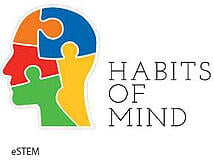
In 2006, the National Academy of Engineering (NAE) and the National Research Council (NRC) convened a special committee to explore the question, “How should K-12 engineering be taught?” The committee’s report, released in 2009, laid out a vision based on three principles. One was that to be effective, classroom engineering activities should help students develop engineering “habits of mind.”
What, exactly, does that phrase mean? Science for All Americans, a report published by the American Association for the Advancement of Science, defines “habits of mind” as “the values, attitudes, and skills that shape our outlook on knowledge and learning.”
Education researchers Art Costa and Bena Kallick assign a similar meaning in a four-book series published by the education coalition ASCD in 2000. They define habits of mind as “the thinking strategies intelligent people deploy when confronted with a problem that has no immediate, obvious solution.”
“In traditional settings,” Costa wrote, “educational outcomes focus on how many answers a student knows. When we teach for the Habits of Mind, we are [also] interested . . . in how students behave when they don't know an answer.” In other words, you can think of habits of mind as a mental toolkit—the set of skills students need to attack and solve problems.
Different educators consider different skills to be http://ericbooth.net/ essential habits of mind. Costa and Kallick list sixteen habits of mind; the arts educator Eric Booth lists twenty; the NAE lists six. Consistent themes do emerge, though; positive “habits of mind” include being imaginative, thinking creatively, collaborating, and sharing information effectively through a variety of communication modes.
How about engineering habits of mind? The NAE lists six, including (1) systems thinking, (2) creativity, (3) optimism, (4) collaboration, (5) communication, and (6) ethical considerations. The NAE report notes that these six “ways of thinking” are not unique to engineering; they're often considered essential skills for citizens of the 21st century.
In other words, when students develop engineering habits of mind, they’re not just learning how to pass a test—they’re learning to make meaning out of the world around them. We can’t predict what challenges the future may hold, but by helping students develop engineering habits of mind, we CAN prepare the next generation of American citizens to meet these challenges.
We at EiE think the NAE list of engineering habits of mind is a great place to start. But based on our experience working with elementary students and teachers, we see evidence that classroom engineering helps develop other valuable habits of mind. In the coming weeks, we’ll use this space to explore some of them, using examples from real classrooms. So bookmark our blog and check back soon.
Habit is a cable; we weave a thread of it each day, and at last we cannot break it. —Horace Mann (19th century American education reformer)
Engineering is Elementary is a project of the National Center for Technological Literacy at the http://www.mos.org/.








